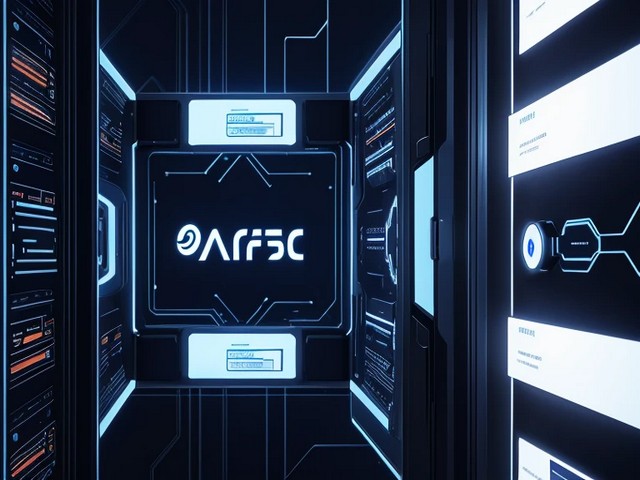
Advanced AI also forms part of contemporary WAFs that are rapidly transforming the cybersecurity arena. In the present times, with cyber threats being in fashion and changing their complexion every day, the need for higher-order security solutions cannot be overemphasized. Conventional firewalls, which were and are still used as a major line of defense in network security, can no longer protect a company against today’s complex threats efficiently. This is the place where AI WAF solutions are much more effective, as they are smarter and more reliable as a means of protection for digital resources.
Cyber Threats and Their Evolution
Traditionally applied as the first line of defense in an organization’s network security, firewalls prove to be ineffective in thwarting emerging threats at a faster rate. Static rule-based systems are however considered a thing of the past since threats in the environment are not fixed or unchanging. AI-incorporated WAFs can process a large volume of traffic and user data to look for anomalies in real time, which is highly beneficial over normal firewalls.
Real-Time Adaptability
Another big plus of AI-based WAFs is their flexibility: the function can be fine-tuned in real-time. Unlike most types of firewalls that depend on rules that have been programmed previously, AI applied to WAFs changes with every interaction making them more reliable. Such flexibility provides an assurance that any threat no matter how nascent it is, is quickly detected and eliminated so that system security is effectively provided.
Higher accuracy of the sites and fewer false positives
For example, conventional firewalls whereby packets are compared with the rules may be blocking traffic, more often resulting in high false positive rates and therefore may hinder rightful traffic and affect users’ experience. While some WAFs are human-integrated and therefore very good at identifying and eliminating threats that are based on real-world behaviors and/or constantly evolving, AI-powered WAFs leverage the power of algorithms to tell the difference between impostors and real threats with great accuracy. This leads to better identification and it greatly decreases the rate of false results hence it enhances a more secure workflow.
Proactive Threat Detection
Machine learning-based WAF solutions perform well in the ability to prevent dangerous threats. These next-generation firewalls are capable of even detecting invasions by using machine learning and behavioral analysis, and they forecast possible invasions using statistical processing of precedents. These views are prospective, and therefore, help organizations prepare themselves and place barriers in such a way that they are hard to penetrate as compared to merely countering impacts from attacks that have happened.
Thus, AI-assisted WAFs are at a new level in the protection of web resources in the field of cybersecurity. Their behavioral abilities to change and acquire new knowledge and become proactive more so in the recognition of threats as compared to traditional firewalls. Based on the future progression of cyber threats, integrating AI into WAFs is essential to enhance the strengthening of security defenses.
Understanding Traditional Firewalls
However, to appreciate this shift spearheaded by AI-powered WAFs, let’s begin with a brief look at the traditional firewall. Network firewalls are the primary shield in network security that filters traffic flowing in and out of the network based on specified firewall rules. It is these firewalls that are very important in blocking out access to and from the Internet and safeguarding sensitive data against threats that may be coming from the Internet.
Nevertheless, standard FW solutions are quite dependent upon the statically predefined rulesets and manual configurations. They can successfully countermeasure standard attacks as the threats are predictable but they suffer a lot when it comes to new-generation attacks since the threats are unknown to the blocker. Conventional firewalls cannot adapt to a new form of attack when it appears hence are not efficient for today’s ever-evolving threats. Furthermore, the traditional firewalls are mainly able to work at the network layer, the functions are packet filtering and stateful inspection.
Such limitation may imply that they are not effectively equipped to deal with application-layer attacks, for example, SQL injection or cross-site scripting, which are some of the popular techniques used by hackers to infiltrate web applications. All the same, traditional firewalls have been instrumental in defining modern cybersecurity.
They offer general security measures that are useful to any organization in as much as they prepare the organization for worst-case scenarios. However, as cyber threats accumulate more and more sophisticated tactics and techniques, customers require more sophisticated solutions, for instance, AI-enabled WAF.
The Evolution of Cybersecurity
These AIP-based WAFs or Web Application Firewalls are considered to be revolutionary changes for cybersecurity. Traditional firewalls work based on programmed rules and are not adaptable enough whereas AI-based WAFs use machine learning techniques in real-time. The dynamic nature of the above factors facilitates the detection of new threats as cyber threats continue to grow.
Adaptive Threat Detection
AI-incorporated WAFs do well in dynamic threat identification. As such, these new age systems are capable of developing from the data acquired from new information and other incidents that took place earlier; this means they are capable of detecting patterns that common firewalls cannot detect hence ensuring a better degree of security against new looks and other day threats.
Real-Time Response
One of the major benefits that come with AI-powered WAFs is that they are capable of proactively performing actions in response to threats. The standard firewalls have limitations of delay and usually, the change of rules is done manually. On the other hand, WAFs enabled by AI can proactively modify their defensive stances, which gives instantaneous responses to ward off possible threats.
Scalability and Efficiency
As we see the traffic level on the web grows and the level of cyber threats becomes higher, the matter of scale takes the upper hand. Self-learning AI WAFs could also scale to infinity since it would take away a lot of work that could constantly require a human to oversee. It also secures the system while at the same time freeing up other resources within IT that can be used for other important functions.
What Are AI-Powered WAFs?
Currently, WAFs that are based on artificial intelligence technologies are attributed to the most advanced cybersecurity solutions. While typical approaches of WAFs are based on a set of rules given in advance, AI spearheads machine learning procedures for the newest threats. Through this adaptive capability, it becomes easy for them to notice and counter complex cyber-attacks on an absolute real-time basis.
Modern AI WAFs are implemented to process an enormous amount of information to find traces that might indicate an attack. Compared to traditional firewalls, these intelligent systems get better over time by learning from new data and are hence better placed to foresee and counter threats. This is proactive and helps to avoid as much as possible the chances of allowing fake traffic while the actual genuine traffic is blocked.
The real beauty of AI-based WAFs is that they can be highly selective in their operations and in the types of threats they block. They can identify the various classes of traffic and implement proper security measures while at the same time guaranteeing maximum security and minimal impact on performance. Further, with many processes involved in threat identification and response being automated, these tools help free the staff’s time to concentrate on more critical work processes.
All in all, modern AI-based WAFs are transforming the sphere of cybersecurity since they provide the highest level of protection against new and sophisticated threats. Due to their ability to learn, analyze data in real time, and automate processes, they are a valuable asset in protecting web applications. This is because the threats in the computer environments are increasing at a rapid pace and that is why AI plays a critical role in cybersecurity actions.
Key Differences Between AI-Powered WAFs and Traditional Firewalls
The next generation of WAF, an abbreviation for Web Application Firewall, can be contemplated as the AI WAF. Thus AI WAFs stands out from the normal firewalls since they do not only empanel a defense mechanism, but one that is dynamic.
Adaptive Learning vs. Static Rules
Conventional firewalls are rule-based devices, or programs which function by defining sets of rules. These static rules can become soon obsolete, and then systems stay unprotected from the new dangerous threats. Meanwhile, the newly developed AI WAFs employ the adaptive learning technique in order to meet emerging threats. AI-driven WAFs are able to learn from the repeated traffic analysis and become ready for new threats to the system in a very short period to build a solid protective system.
Threat Detection and Response
Conventional firewalls employ signature-based detection for which they can only work when the threat’s signature is already familiar to them. One of AI’s strengths in WAF is in the anomaly detection where it is able to identify the deviation from the normal patterns and activities that are characteristic of a zero-day attack. The above dynamics makes AI powered WAFs to offer a better cover as compared to their counterparts.
Scalability and Performance
With the advancement of web applications and surge in traffic, conventional firewall may begin to slow down. Modern AI-powered WAFs are distributed by their nature to scale very well, they can handle millions of requests per second while still providing strong protection. As a result, since today’s organizations and online applications experience high traffic rates, AI-powered WAFs are useful due to their capabilities to process large amounts of data in a short period.
Behavioral Analysis and User Profiling
Like the conventional WAFs, AI-powered WAFs are built on behavioral analysis in order to determine activities of users on the web applications. The intelligent systems can monitor the account activities and identify the user profile, hence profiling the users and developing behavioral norms, these activities can be tagged as suspicious and therefore blocked. This is a problem traditional firewalls do not have, that is why AI-powered WAFs are better for individual protection measures.
Automation and Efficiency
Handling of routine security tasks is one of the areas that AI integrated WAFs surpass traditional firewalls. AI can be applied to some tasks, such as threat identification, action to take, or even updates to WAF security rules and so on, thus lesser load on IT personnel.
Advantages of AI-Powered WAFs
Sophisticated AI techniques are being used in a new generation of WAFs, which stands for web application firewall. These are more complex systems that in many ways provide features not present in other conventional firewalls, which makes them crucial components for the future.
Real-Time Threat Detection
AI-based WAFs also perform well at log analysis of live threats. The current WAFs differ from traditional firewalls in that they employ artificial intelligence to combat threats instantly without relying on predefined rules, so your web applications will be safe.
Adaptability and Learning
Standalone WAFs and especially those that are based on AI improve their performance over time due to new data flow into their algorithm. This provides them with an edge in that threats are always on the rise and their defenses are learned to update on their own. Hence there is constant training that a given system is protected from the current vulnerabilities available in the market.
Enhanced Accuracy
Machine learning-based WAFs are better equipped in identifying threats on the web. Many traditional firewalls exhibit high false positive rates, which means that many alerts are false alarms. These enhanced WAFs hence can detect the actual and real-time threats of malicious activities since the AI algorithms used can filter out genuine traffic without triggering false alarms.
Scalability
The last benefit that can be mentioned regarding AI WAFs is scalability. Such systems can be arranged to expand with the rest of the components of your organization, and still maintain its security. There is no problem with handling traffic and more complex threat introduction scenarios, these will always afford the protection they need.
Cost-Efficiency
AI integrated WAFs are also more efficient in the long run as it eliminates the need for frequent monitoring and updating of rules manually. Despite their incapability to learn and optimize themselves over time, which makes them different from classical firewalls, they supplement decrease operational costs.
Comprehensive Analysis
The capability to perform an elaborate study is one of the significant advantages AI based WAFs. These are extensive data systems that offer elaborate information about the threats’ prevalence and the systems’ weaknesses. Such an extent of examination enables organizations to prevent probable security threats. To sum up, modern AI-based solutions for WAF are much more than just an evolution of the traditional firewalling concept; they are revolution in the web application security field.
Thus, using real-time threats detection, adaptability, improvements in accuracy, scalability, cost-effectiveness, and complete analysis, it provides a strong intelligent protection for the constantly developing cyber threats.
Real-World Applications of AI-Powered WAFs
AI-based WAF is a shift in the functioning of cybersecurity frameworks in the way it offers advanced protection from various threats. These next-gen firewalls have also better capability to adapt to the new generation of attacks as compared with the old style of firewalls.
Adaptive Threat Detection
Another common trait of the modern, AI-powered WAFs is the ability to learn new threats. These intelligent systems keep on evolving with every attack and set ever-changing parameters. It means that organizations are shielded from new threats, and, once again, this is a major benefit over traditional, rule-based firewalls.
Real-Time Data Analysis
Application-integrated AI WAFs have responsive capabilities in performing real-time analysis of the traffic data in line with the organization’s internet traffic. It makes it possible to contain threats as they occur, this cuts the time that a threat can occur and the amount of damage that can be caused. On the other hand, traditional firewalls provide low processing and response to threats to the systems.
Customized Security Protocols
They further incorporate AI WAFs to offer protected protocols that are specific to clients’ needs. Such systems are capable of using analytical information about distinct requirements of the network and its traffic intensity to provide the maximum level of protection. Such specific outcomes are hardly possible with standard firewalls, as they use a more universal approach toward protection.
Automated Threat Response
I have identified the strengths of AI-powered WAFs to be in the automation of the detection and activities of war drivers. Such a system is capable of providing an ’’umbrella’’ response for detected threats and preventing such traffic from reaching the critical systems. This automated response ushers out human involvement and increases the quickening of defensive measures, which might be significant for containing a rapidly growing cyber threat.
Enhanced User Experience
Using AI in WAFs helps to boost not only the security level but also avoid such drawbacks as excessive false positives that deteriorate users’ experience. Besides, the traditional form of firewalls has a challenge in discriminating between good traffic and bad traffic hence causing a lot of interference. Newer is the kind of algorithms that AI-based WAFs incorporate for threat detection, which has a positive impact on users’ experience.
Case Studies: Success Stories of AI-Powered WAFs
The AI-based WAFs have changed the face of cybersecurity completely and have offered the best solutions for every enterprise in all fields. The following case lets us discuss how these technologies have made a turnaround as indicated below.
Retail Sector: Safeguarding Consumer Data
An e-commerce company with a huge online store used artificial intelligence-enabled WAFs for the protection of the store. ; due to the machine learning algorithms incorporated in the WAF, it was able to evolve with the multiple threats and prevent multiple data breaches. Employment of this proactive measure led to the annual decrease in security incidences by 40 percent guaranteeing the safety of millions of customer records.
Financial Services: Increasing The Level Of Transaction Security
A case was that a top-tier bank was finding it difficult to safeguard Internet transactions from new and improved types of hacking. An AI Wyre FireWall was embraced for real-time threat identification as well as automatical measures of handling the threats. These measures helped to reduce fraudulent activities by 35% and thus enhanced customers’ confidence in the use of the bank’s online services.
Healthcare Industry: Safe Guarding of Sensitive Data
One large healthcare provider adopted AI-based WAFs as part of securing patient records and addressing high-security standards and legislation. It encompassed complex patterns of network traffic analysis and unquestionably obstructed suspicious ways of attempts to breach the security of the system. Consequently, the reported protection of the patient data in the hospital increased by 50%.
Education Sector: Safeguarding Scholars’ Property
A well-known university hosted AI-progressive WAFs to protect its educational and research files. The Learning capability enabled the WAF to adapt to the changing threats which enhanced protection against cyber attacks. Through this implementation, the organization reduced the cyber incidents to the academy resources, which are 30%, and protected the integrity of the resources.
Technology Firms: Strengthening New Ideas
A tech startup firm adopted the AI-based WAF to safeguard its hi-tech software products. Functions such as threat detection and mitigation which are usually performed by the older WAFs were made possible through the use of an advanced WAF, thus improving the continuity of service delivery. The achieved cybersecurity resulted in a 45% improvement in the volume of threats preventing the startup from concentrating on innovation and development.
Challenges and Limitations of AI-Powered WAFs
The concepts of AI-powered WAFs are being introduced and implemented gradually as they are a breakthrough in cybersecurity; nevertheless, they have certain disadvantages and drawbacks. The main problem with AI-diverse WAFs is the concept of true and false positive/negative. Whereas normal firewalls work on rules and regulations set in advance for it, the WAFs developed with the help of AI are based on an algorithm. These algorithms may sometimes identify legitimate traffic as an intrusion (false positive) or may fail to note an intrusion at all (false negative) which can culminate in severe security viciousness.
Another drawback is flexibility which is difficult to implement and then manage. AI-based WAF solutions must be enforced concerning the organization’s security requirements and the characteristics of AI tools. This can be time-consuming and involve particular skills that many business entities may not possess in adequate measure. Furthermore, the sharpening of the AI models which is a continuous process also creates more work and responsibilities for the conducting of training, the bulk of which may need frequent revisions. Another issue to consider is scalability.
With the rising amount of Internet traffic, response times on AI-enabled WAFs might diminish, and the system may become a bottleneck. Making certain that this created system can cater to tons of traffic on the web without threatening the security and efficacy of the sites is one of the major issues to solve. Privacy and data protection are also among those major concerns. AI-based WAFs require raw data for their functioning and processing of the rand before requiring large amounts of data.
Issues arise as to how this data is being collected, processed, and used, and what becomes of it, especially when organizations such as universities, business entities, and governments are bound under comprehensive data protection laws such as GDPR. Business entities should further check their AI-enabled WAF solutions for compliance with all the required laws to mitigate the impact of possible legal consequences. Last but not least, the cost seems to be rather high. Also, the high-end functions and attributes of the AI-powered WAFs are typically expensive.
Because of the cost of the technologies, it might prove a challenge for most organizations, especially those of a small scale, to make considerable investments in cutting-edge security systems. Therefore, the paper establishes that although AI-powered WAFs are far superior to conventional firewalls, they have their drawbacks and inconveniences as well. These are some of the aspects that organizations need to consider when it comes to AI-powered WAFs in their business security frameworks.
Future Trends in AI-Powered Cybersecurity
AI WAFs are inculcating the environment of cybersecurity by providing more optimal solutions than what conventional firewalls provide. These web application firewalls are also evolving with the modern advanced AI technologies making them more efficient in fighting cyber threats.



